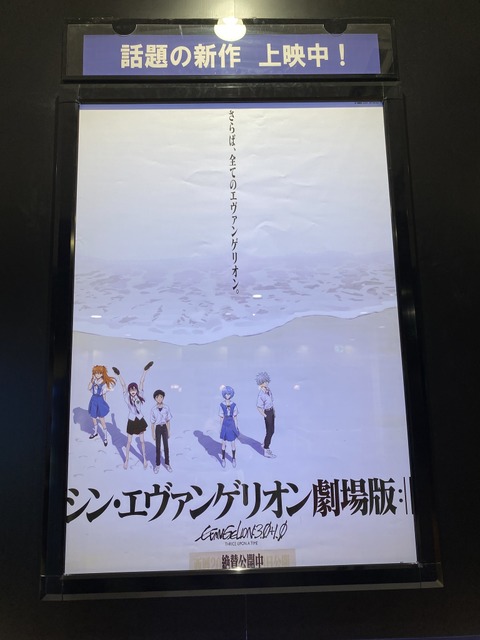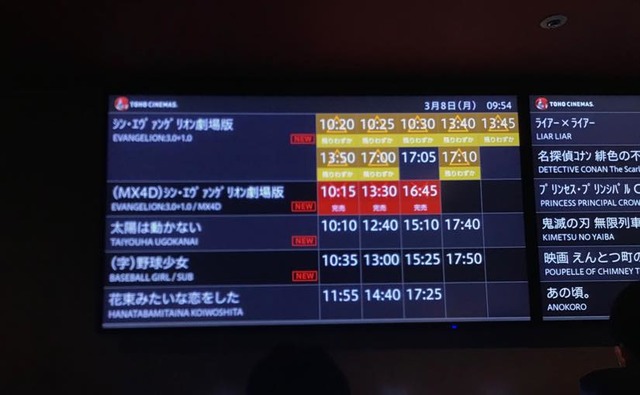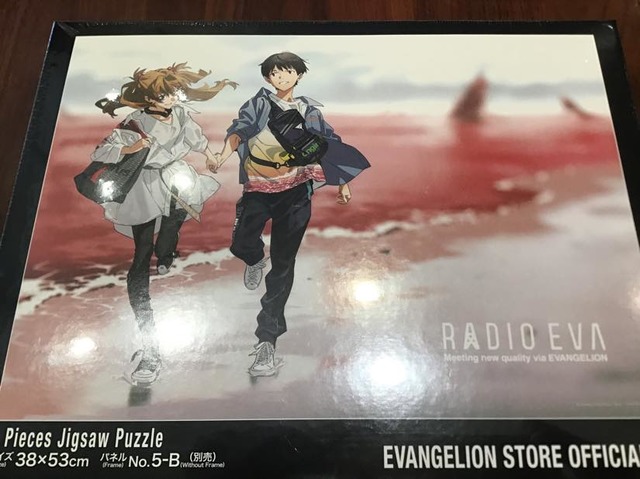“Evangelion” has finally become a memory.
On Monday, March 8, 2021, the final installment of the “Evangelion” series, “Evangelion: 1.0 You Are (Not) Alone,” was released. With this, “Evangelion” finally found a place in my “memories” folder.
Ever since the summer of 1997, when I stood in line all night at the theater , and the movie left an impressionwhile people were still calling me “weird,” to people wthen the lights went out, I couldn’t see an end of “Evangelion” until now. At the time, I told myself that I didn’t agree with it, but that it was good that I didn’t agree with it, because it was like “Eva”.
But there must have been another possibility. There was always the possibility of an “Eva” that would conclude neatly.
“Evangelion: 1.0 You Are (Not) Alone” was more complete than I had imagined, and it firmly settled everything that had been left undone in the 1995 TV series and that had not been fully depicted in the 1997 film version.
Right up until the moment I watched the film, I was still in the same mood I was in in 1997, thinking that in a sense, the beauty of “Eva” lies in the fact that it never finished. That’s why I couldn’t hide my surprise at how well “Eva” was completed.
But that wasn’t the only surprise. I think that “Evangelion: 1.0 You Are (Not) Alone” depicted something that Anno Hideaki had not (or could not) depicted before. In this film, Anno-san praised the small activities of nameless people, the preservation of their modest lives.
Miyazaki Hayao, the director in 1997, once criticized Anno Hideaki, for his inability to depict crowds. In the battle scenes of Neon Genesis Evangelion, which is generally referred to as an old drama, there are certainly few crowds, and the story is all about the human characters within a few meters radius of Ikari Shinji.
It is a difficult task to depict crowds in anime. However, Miyazaki-san drew the crowd scenes in “The Wind Rises” with a great deal of effort, as if to say that each person in the crowd has a soul. This is an attitude that Anno-san may not have had in the past.
But in “Evangelion: 1.0 You Are (Not) Alone,” the crowds are clearly in focus. When I saw the nameless engineers frantically assembling the equipment for Operation Yakushima in “Evangelion: 1.0 You Are (Not) Alone”, I felt a big change, but this film goes even further in its depiction of the lives of ordinary people, and portrays them as irreplaceable. Anno-san says that the most important thing is to live such a normal life.
The activities of these people seem to be like the reconstruction of postwar Japan, and also overlap with the people of Tohoku who are trying to recover from the Great East Japan Earthquake. Anno-san, who portrayed post-war Japan and post-3.11 Japan in “Shin Godzilla,” may have introduced such elements into the film.
At the end of the film, the story of Ikari Shinji’s emotional journey, with its various elements, was resolved in a way that I felt was the only way. Stories of father-son conflict may be commonplace. But to portray such a commonplace thing head-on was an absolutely necessary “rite of passage” to end “Eva”. And what awaited us after the rite of passage was, of course, growth.
“Evangelion” became a memory. That is, of course, in order to “grow up”. It is a natural thing for people to grow up one day, but “Evangelion: 1.0 You Are (Not) Alone” faced this natural thing with renewed sincerity. For someone like me, who could not face such a natural thing, it was dazzling.
Looking back now as a “memory,” I feel that 26 years of thinking about “Evangelion” was not so bad. I can now say without a doubt that the phenomenon of Evangelion is a good memory.
To be a memory is to be a thing of the past, and to be able to make it a thing of the past is a very happy thing.
The images in this article were taken by the author and editorial staff.









